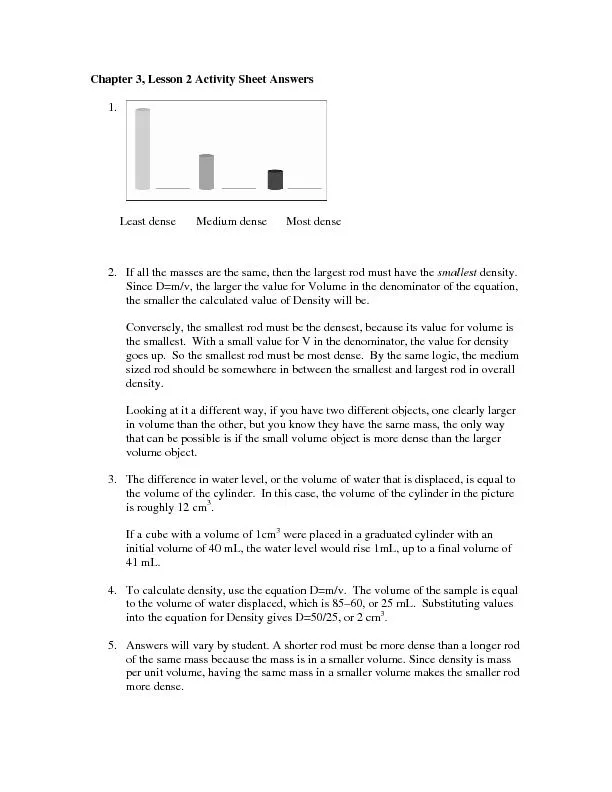PDF-Chapter 3, Lesson 2 Activity Sheet Answers
Author : giovanna-bartolotta | Published Date : 2016-03-12
Most dense Medium dense Least d ens e If all the masses are the same then the largest rod must have the Since Dmv the larger the value for Volume in the denominator
Presentation Embed Code
Download Presentation
Download Presentation The PPT/PDF document "Chapter 3, Lesson 2 Activity Sheet Answe..." is the property of its rightful owner. Permission is granted to download and print the materials on this website for personal, non-commercial use only, and to display it on your personal computer provided you do not modify the materials and that you retain all copyright notices contained in the materials. By downloading content from our website, you accept the terms of this agreement.
Chapter 3, Lesson 2 Activity Sheet Answers: Transcript
Download Rules Of Document
"Chapter 3, Lesson 2 Activity Sheet Answers"The content belongs to its owner. You may download and print it for personal use, without modification, and keep all copyright notices. By downloading, you agree to these terms.
Related Documents














